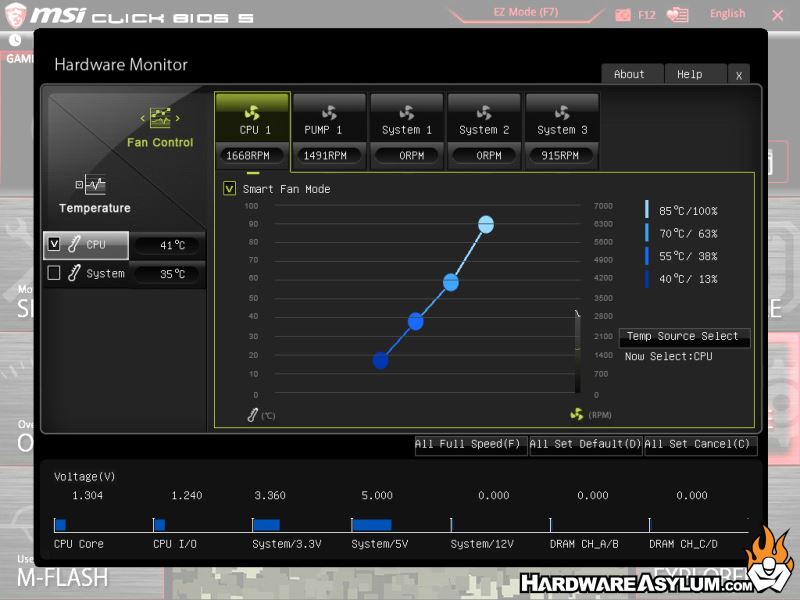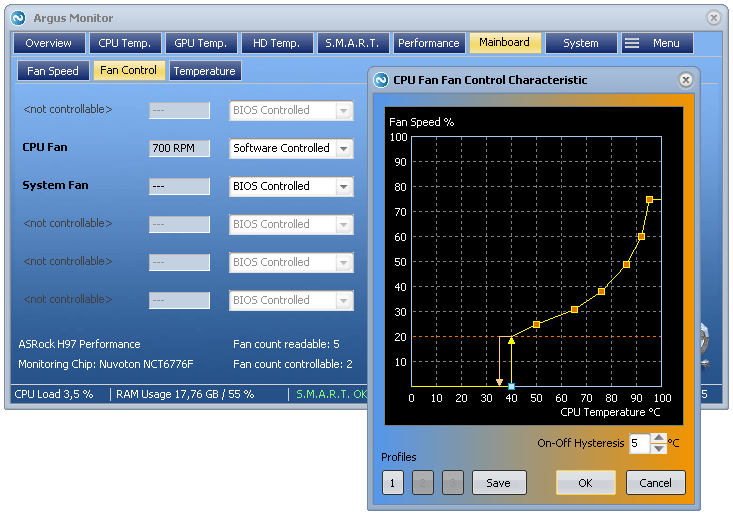

I was remotely connected to the workstation in question and can conclude: See the additional input from the consultant: The HP Performance Advisor does a good job of monitoring fan speed and temperature in one pane, and something like Prime95 or SuperPi pegs the CPU easily. For kicks, can you run something CPU-intensive on one of your Z420 units and see how far the temperature creeps up? It didn't take more than four or five minutes for mine to top out, though the Xeon 1620 v2 is a pretty toasty chip, but ultimately the fan doesn't ramp up past 1,000 rpm. Thanks for the feedback Denis! Yeah, I could definitely see a high-power GPU like that causing trouble. Granted, I really like how quiet it is most of the time, but when I've got a 100% load on the CPU I expect it to jump up a smidge.

Has anyone else seen this kind of behavior? The fan speed should be controlled by the board, and though this higher-watt Xeon can technically handle warmer temps, it's a little silly that it would get that warm (and climbing) without the fan speed climbing past the lowest setting. So I get to googling, as one does, and find that there are half-dozen or so threads on the HP forums complaining about the same thing, and that eventually people give up and just modify the idle fan speed in BIOS to run faster 24/7, since it doesn't seem to get any faster. Lo and behold, the CPU got up to 80c before I cut the cord, and at no point did the CPU fan ramp up past ~600rpm. Thinking that maybe there was some Linuxy thing that was screwing with the board's ability to read the CPU temp (dumb, but I'm grasping at straws) I booted into Windows to run some stress tests. I've got an HP Z420 workstation that I've been playing around with, and noticed that when I was screwing around in a pretty CPU-intensive process on Linux that the fan speed never ramped up, but the heatsink got pretty toasty.


 0 kommentar(er)
0 kommentar(er)
